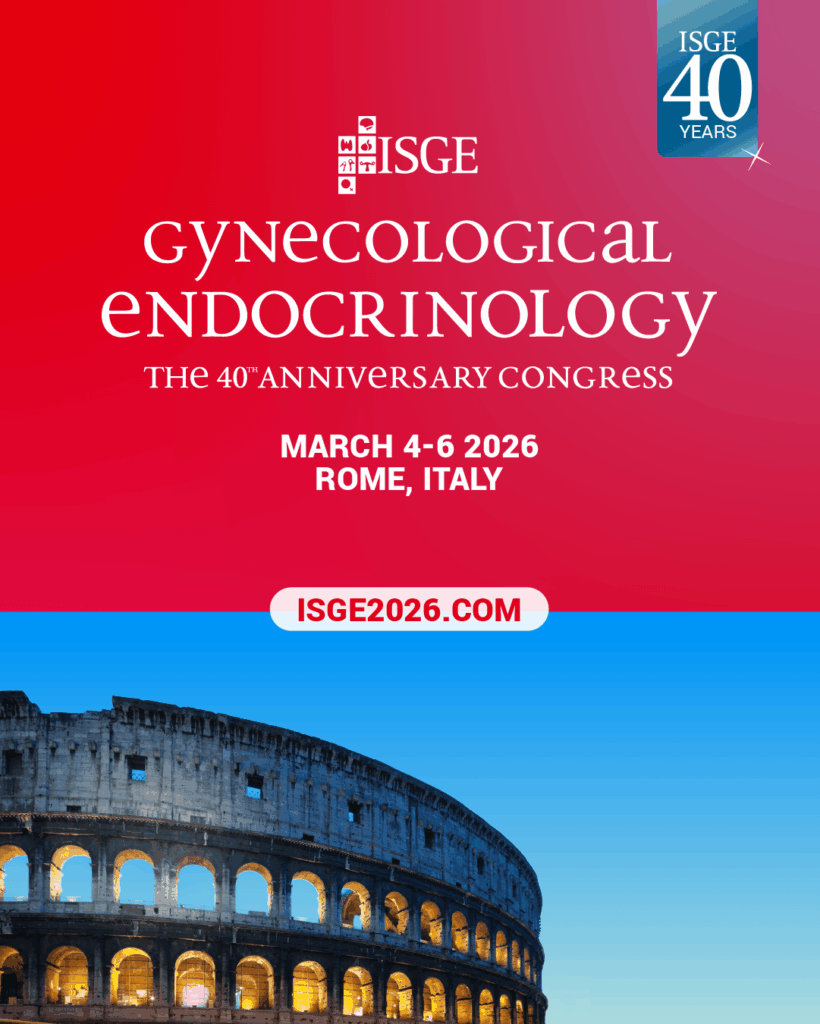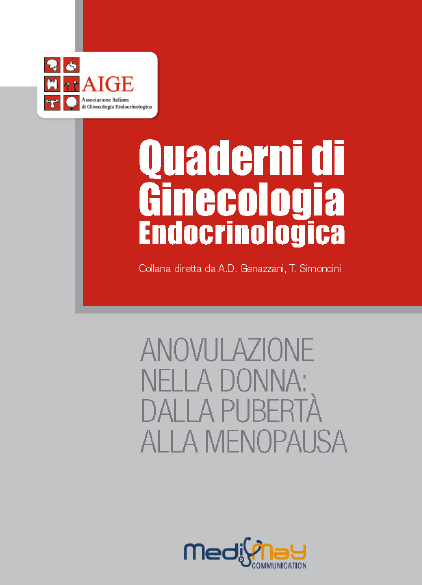-
A Unsal, M. Tozun, U. Ayranci
Prevalence of depression among postmenopausal women and related characteristics
CLIMACTERIC 2011;14:244–251
Abstract
Objective To estimate the prevalence of depression in postmenopausal women and to evaluate the relation between postmenopausal depression and some sociodemographic characteristics.
Methods This cross-sectional study was conducted in 744 postmenopausal women aged 45–65 years residing within Sivrihisar, Eskisehir, a town in western Turkey. The study was conducted between May 1 and June 30, 2009. Depression was measured with a Turkish version of the Beck Depression Inventory. Data were gathered during routine visits to the women’s homes. Following the completion of the questionnaires and scales, the women’s body mass indices were calculated by measuring their heights and weights. Statistical analysis used the w2 test and the Wald backward stepwise method. A value of p<0.05 was considered statistically significant.
Results The prevalence of depression was 24.7% (184/744). The average age of the women at menopause was 46 years. Significantly important risk factors for depression were primary-school education level (odds ratio (OR) 1.681), not being married (OR 1.653), having a history of psychiatric illness (OR 2.186), entering into menopause at the age of 39 years (OR 2.705), having irregular menstruation before menopause (OR 1.729), and having no children (OR 3.316).
Conclusion Depression among postmenopausal women is an important public health problem that requires attention; furthermore, women are at risk in terms of depression after entering into menopause.
-
F. Labrie, D. F. Archer, C. Bouchard{, M. Fortier, L. Cusan, J.-L. Gomez, G. Girard, M. Baron, N. Ayotte, M. Moreau, R. Dube´, I. Cote´ , C. Labrie, L. Lavoie, L. Berger, L. Gilbert, C. Martel and J. Balser
Intravaginal dehydroepiandrosterone (prasterone), a highly efficient treatment of dyspareunia
CLIMACTERIC 2011;14:282–288
Abstract
Objective To examine the effect of intravaginal dehydroepiandrosterone (DHEA) on pain at sexual activity (dyspareunia) identified as the most bothersome symptom of vaginal atrophy in postmenopausal women at both screening and day 1.
Methods This prospective, randomized, double-blind and placebo-controlled phase III clinical trial studied the effect of prasterone (DHEA) applied locally in the vagina on the severity of dyspareunia in 114 postmenopausal women who had identified dyspareunia as their most bothersome symptom of vaginal atrophy, while meeting the criteria for superficial cells _5% and pH45.0 at both screening and day 1.
Results At the standard duration of 12 weeks of treatment, increasing doses of 0.25%, 0.5% and 1.0% DHEA decreased the percentage of parabasal cells by 48.6+6.78%, 42.4+7.36% and 54.9+6.60% (p <0.0001 vs. placebo for all) with no change with placebo (p=0.769). The effects on superficial cells and pH were also highly significant compared to placebo at all DHEA doses. The severity score of pain at sexual activity decreased by 0.5, 1.4, 1.6 and 1.4 units in the placebo and 0.25%, 0.5% and 1.0% DHEA groups, respectively, with the p value of differences from placebo ranging from 0.0017 to 0.0001.
Conclusions Intravaginal DHEA, through local estrogen and androgen formation, causes a rapid and highly efficient effect on pain at sexual activity without systemic exposure of the other tissues, thus avoiding the recently reported systemic effects of estrogens.
-
JIMENA SOUTELO, MELINA SABAN, VIRGINIA QUEVEDO, EUGENIA GANDUR, ANALIA PARIS, PAOLA ALBA, JULIA GONZALEZ, MARIA BARBERO, CLARA FRIZT, & GABRIEL FARAJ
Metabolic syndrome in Argentine women: ATPIII, IDF, DF/AHA/NHLBI; What criterion should be used?
Gynecological Endocrinology 2011; 27: 448–451
Abstract
Introduction. The menopause and the metabolic syndrome (MS) are related with the increase of the risk of cardiovascular diseases.
Objectives. To evaluate the existence of metabolic risk factors and the prevalence of MS in pre- and post-menopausal women.
Subjects. 253 women: 120 pre-menopausal and 133 post-menopausal. Anthropometric, arterial pressure and waist circumference measurements were carried out. Glycaemia, lipids, creatinine, hepatogram, uric acid and thyroid-stimulating hormone were dosed.
Results. Statistical higher registries of arterial pressure, levels of glycaemia, total cholesterol, low-density lipoprotein, triglycerides and TG/high-density lipoprotein relation were observed among post-menopausal patients. As regards this group, the MS diagnosis was considerably higher, being the same by all the criteria.
Conclusions. We found more prevalence of cardiometabolic and MS risk factors among the group of postmenopausal patients. The responsible mechanisms would respond to the secondary hypoestrogenaemia at the cease of the ovarian function. Because of this fact, menopausal women should be considered a risk group for the development of MS.
-
Germaine M. Buck Louis, Kirsten J. Lum, Rajeshwari Sundaram, Zhen Chen, Sungduk Kim,
Stress reduces conception probabilities across the fertile window: evidence in support of relaxation
Fertil Steril 2011, 95: 2184-2189
Abstract
Objective To assess salivary stress biomarkers (cortisol and α-amylase) and female fecundity.
Design Prospective cohort design.
Setting United Kingdom.
Patient(s) 274 women aged 18 to 40 years who were attempting pregnancy.
Intervention(s) Observation for six cycles or until pregnancy: women collected basal saliva samples on day 6 of each cycle, and used fertility monitors to identify ovulation and pregnancy test kits for pregnancy detection.
Main Outcome Measure(s) Salivary cortisol (μg/dL) and α-amylase (U/mL) concentration measurements; fecundity measured by time-to-pregnancy and the probability of pregnancy during the fertile window as estimated from discrete-time survival and Bayesian modeling techniques, respectively.
Result(s) Alpha-amylase but not cortisol concentrations were negatively associated with fecundity in the first cycle (fecundity odds ratio = 0.85; 95% confidence interval 0.67, 1.09) after adjusting for the couples’ ages, intercourse frequency, and alcohol consumption. Statistically significant reductions in the probability of conception across the fertile window during the first cycle attempting pregnancy were observed for women whose salivary concentrations of α-amylase were in the upper quartiles in comparison with women in the lower quartiles (highest posterior density: –0.284; 95% interval –0.540, –0.029).
Conclusion(s) Stress significantly reduced the probability of conception each day during the fertile window, possibly exerting its effect through the sympathetic medullar pathway.
-
Genazzani AD, Lanzoni C, Ricchieri F, Santagni S, Rattighieri E, Chierchia E, Monteleone P, Jasonni VM
Acetyl-L-carnitine (ALC) administration positively affects reproductive axis in hypogonadotropic women with functional hypothalamic amenorrhea
J Endocrinol Invest. 2011 Apr;34(4):287-91
Abstract
BACKGROUND: Hypothalamic amenorrhea (HA) is characterized by neuroendocrine impairment that, in turn, negatively modulates endocrine function, mainly within the reproductive axis. HA presents with hypo-LH, hypoestrogenism and, until now, a definite therapeutic strategy has not yet been found. The aim of the following study was to test the efficacy of acetyl-L-carnitine (ALC) administration in HA-affected subjects.
POPULATION: Twenty-four patients affected by stress-induced HA were divided into two groups according to LH plasma levels: group A, hypo-LH (LH≤3 mIU/ml; no.=16), and group B, normo-LH (LH>3 mIU/ml; no.=8), were treated with ALC (1 g/day, per os) for 16 weeks.
DESIGN: Patients underwent baseline hormonal assessment, pulsatility test (for LH and FSH), naloxone test (for LH, FSH and cortisol) both before and after 16 weeks of treatment.
RESULTS: Under ALC administration hypo-LH patients showed a significant increase in LH plasma levels (from 1.4±0.3 to 3.1±0.5 mIU/ml, p<0.01) and in LH pulse amplitude (p<0.001). No changes were observed in the normo-LH group. LH response to naloxone was restored under ALC therapy. Maximal LH response and area under the curve under naloxone were significantly increased (p<0.05 and p<0.01, respectively). No changes were observed in the normo-LH patients.
CONCLUSIONS: Our data support the hypothesis of a specific role of ALC on counteracting the stress-induced abnormalities in hypo-LH patients affected by hypothalamic amenorrhea.
-
Sharon E. Oberfield, Aviva B. Sopher, and Adrienne T. Gerken
Approach to the Patient: Approach to the Girl with Early Onset of Pubic Hair
J Clin Endocrinol Metab 2011 96: 1610-1622
Abstract
Premature pubarche, or the development of pubic hair before the age of 8 in girls or 9 in boys, is most commonly caused by premature adrenarche. Adrenarche is the maturation of the adrenal zona reticularis in both boys and girls, resulting in the development of pubic hair, axillary hair, and adult apocrine body odor. Although originally thought to be a benign variant of normal development, premature adrenarche has been associated with insulin resistance and the later development of metabolic syndrome and polycystic ovary syndrome. Although further studies are needed to confirm these relationships, the case presented herein argues for periodic assessment of children at risk. Indeed, recognition of these associations may allow for early preventive measures.
-
Susan R. Davis, Mary Panjari, and Frank Z. Stanczyk
DHEA Replacement for Postmenopausal Women
J Clin Endocrinol Metab 2011 96: 1642-1653
Abstract
Context: It has been proposed that because dehydroepiandrosterone (DHEA) and its sulfate, DHEAS, are important precursors for estrogen and androgen production, treatment with DHEA is a physiologically based strategy for the alleviation of hormone deficiency symptoms in postmenopausal women.Wehave summarized the physiology ofDHEAinwomenand reviewed the findings from randomized controlled trials (RCT) of the effects ofDHEAtherapy in postmenopausalwomen with normal adrenal function.
Evidence Acquisition: We reviewed the medical literature for key papers investigating DHEA physiology and RCT of the use of DHEA in postmenopausal women through November 2010. The focus was on sexual function, well-being, metabolic parameters, and cognition as study endpoints.
Evidence Synthesis: Although cross-sectional studies have indicated a link between low DHEA levels and impaired sexual function, well-being, and cognitive performance in postmenopausal women, placebo-controlled RCT do not show benefits of oral DHEA for any of these outcomes or favorable effects on lipids and carbohydrate metabolism.
Conclusions: Taken together, findings from this review of the published literature of studies do not support the use of DHEA in postmenopausal women at this time.
-
Johanna Puurunen, Terhi Piltonen, Laure Morin-Papunen, Antti Perheentupa, Ilkka Järvelä, Aimo Ruokonen, and Juha S. Tapanainen
Unfavorable Hormonal, Metabolic, and Inflammatory Alterations Persist after Menopause in Women with PCOS
J Clin Endocrinol Metab 2011 96: 1827-1834
Abstract
Context: Women with polycystic ovary syndrome (PCOS) are known to suffer from hyperandrogenism and impaired glucose tolerance, as well as chronic inflammation, exposing them to an increased risk of cardiovascular diseases. However, the degree to which these hormonal and metabolic alterations persist after menopause (MP) is not well documented.
Objective: Our objective was to explore whether adverse metabolic and hormonal alterations persist after MP in women with PCOS.
Design: We conducted a cross-sectional university hospital-based study.
Patients and Interventions: Twenty-one pre-MP (n = 10) and post-MP (n = 11) women diagnosed with PCOS were compared with 29 healthy controls (pre-MP, n = 11; post-MP, n = 18). Two-hour oral glucose tolerance tests were performed, and ovarian steroid secretion capacity was assessed (human chorionic gonadotropin tests). Areas under the curves (AUC) were calculated.
Results: Both pre-MP and post-MP women with PCOS had increased insulin response in oral glucose tolerance tests (AUCins pre-MP = 6733.7 vs. 3382.9; post-MP = 9732.1 vs. 3265.3) and were more insulin resistant than controls. Androgen secretion capacity was increased before and after MP in PCOS (AUC of androstenedione; pre-MP: 1218.4 vs. 853.2; post-MP: 1000.0 vs. 531.3). High-sensitivity C-reactive protein remained elevated after MP in PCOS (pre-MP: 1.3 vs. 0.7; post-MP: 1.4 vs. 0.9 mg/liter). Adjustment for body mass index did not alter the results except for glucose metabolism.
Conclusions: The results indicate that impaired glucose metabolism, enhanced ovarian androgen secretion, and chronic inflammation observed in pre-MP women with PCOS persist after menopausal transition emphasizing life-long health risks related to this syndrome.
-
Christel Renoux, Samy Suissa
Hormone therapy administration in postmenopausal women and risk of stroke
Women’s Health (2011) 7: 355–361
Abstract
HRT, consisting of estrogens alone, or in combination with a progestogen, is widely used for the relief of symptoms in postmenopausal women. Early observational studies have suggested that HRT might be associated with a reduced risk of cardio- and cerebro-vascular events. These encouraging results prompted randomized controlled trials assessing the risks and benefits of HRT in primary and secondary prevention of arterial vascular events. However, these clinical trials and further observational studies did not confirm the protective effect of HRT; it is now established that HRT increases the risk of stroke. This increased risk is mainly related to an increased risk of ischemic stroke. Oral estrogen alone and combined with progestogen are associated with a similar increased risk, which may be dose dependent. Conversely, a low dose of transdermal estrogens with or without a progestogen does not seem to be associated with such an increased risk of stroke, whereas the impact of tibolone, a synthetic steroid, remains uncertain. In summary, there is now a large amount of evidence demonstrating that HRT is associated with increased risk of stroke, in particular, ischemic subtype






